A teeth retainer is a vital piece of equipment if you want to keep your teeth in their new position after dental braces. But choosing the right type of retainer for you can be confusing.
Removable Essix and Hawley retainers are one option, but you can also get a permanent fixed retainer on the back of your teeth. Each of these comes with pros and cons, so how do you decide? Well, if you’re about to get your braces off or are looking for a new replacement retainer, we’re here to help you understand your options.
We’ll explain why you might choose one type of dental retainer over another and what they are like to wear. We’ll also look at how much retainers cost in the UK, both on the NHS and privately, and how long you can expect them to last.
Hopefully, this information will help you choose the best retainer for your teeth.
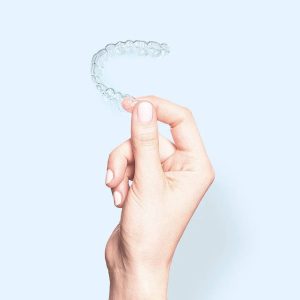
Keep your smile perfectly aligned with NewSmile’s affordable and convenient retainers. Choose a plan that fits your lifestyle and ensures your teeth stay in place after braces!
- Plan options: Single set purchase or an annual subscription for regular updates
- Retainer types: Choose from regular or extra thick for additional durability
- High standards: FDA-approved BPA-free plastic
- Free shipping: Free delivery on all orders
- Cost-effective: Save up to 50% compared to clinic prices
In This Article
What’s a retainer?
A dental retainer is a device that fits over or behind your teeth to keep them in position after treatment with braces.
Retaining devices can be made from clear plastic, metal wire, or a combination of the two. The different types of retainer function in slightly different ways, but they all have the same purpose.
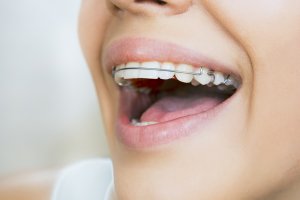
after braces
How do retainers work and why do you have to wear one after braces?
Let’s be honest, wearing braces isn’t something you do for fun. You’ve worked hard and probably endured some discomfort to get a smile you’re happier with, and the last thing you want is for your teeth to start moving out of position again. That’s where your teeth retainer comes in.
After your braces have been removed, your teeth will naturally start moving back to their original position. It’s also common for our teeth to shift as we get older and when wisdom teeth come through. Wearing a retainer after braces helps to hold your teeth in the correct alignment.
Both removable and fixed retainers will keep your teeth straight for years to come, as long as you keep wearing them as your dentist advises!
You can get a retaining device for the upper or lower teeth only, or for both – usually corresponding to where your braces were placed.
Braces vs retainers: what’s the difference?
Braces are designed to move misaligned teeth into a better position to improve dental health. They can be fixed onto your teeth with brackets, or you can use removable aligner braces like Invisalign. Treatment with braces can last anywhere between 6 months and 3 years, depending on the amount of movement required.
Retaining devices are worn after braces and are usually intended to keep your teeth straight rather than move them. There are many different types of retainer: fixed or removable, plastic or metal, but they all have the same goal: to stop your teeth from becoming crooked again.
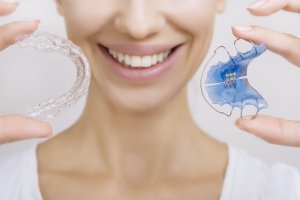
to consider.
Can you use a retainer for teeth straightening?
Some mouth retainers can straighten crooked teeth if only mild correction is needed, for example, if you have previously worn braces and your teeth have started moving again. Your dentist or orthodontist will be able to advise you of the best treatment for you.
Spring aligner retainers can help with simple movements of the teeth. They look similar to a normal Hawley device, but they have extra parts that move one or more teeth slightly or help to prevent the teeth from overcrowding or twisting.
Our guide to teeth straightening has more details of the options for getting straighter teeth with and without braces.
If you want to straighten your teeth without fixed metal braces, removable braces could be a good solution. These systems use clear, removable aligners, which look the same as clear plastic retainers and are almost invisible when worn. Unlike retaining devices though, clear aligner braces are carefully designed to put pressure on certain teeth to move them into the desired position.
While they may look similar, retainers, mouth guards, and night guards are all used for different reasons. Retainers are what help keep your teeth in position after orthodontic care, while mouthguards are designed to keep the teeth safe from injury.
Mouthguards are made of flexible plastic that protects the jaw and teeth during physical activity and sports. Alternatively, night guards are more firm than a mouthguard and made for patients that clench or grind their teeth at night. Nightguards protect the teeth and jaw from pain and damage caused by the grinding.
Dr. Ashley Niles, Niles Family Dentistry
Types of retainers
As we’ve mentioned, there are a few different types of retaining devices available. We’ll give you some information about their plus points and downsides and show you what each retainer looks like, but you should listen to your dentist’s advice about what’s best for your teeth.
Hawley retainer (removable)
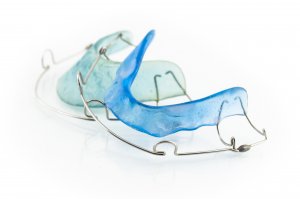
Hawley retainers, also called wire or metal retainers, can be used on both your upper and lower teeth. They are fully removable and you should take them out for eating and drinking sugary drinks. The plate (the part that touches your gums and palette) is made from acrylic plastic, and there are wires that sit over and across your teeth. Some dentists might offer to customise the colour of the plate or add a pattern.
This is one of the cheapest retainers available and they can last for many years if cared for properly. One obvious downside of Hawley retainers is that they are very noticeable, especially if used on the upper teeth. Once you transition to only wearing them at night, though, this isn’t such an issue.
You may also hear a Hawley device called a ‘wrap around retainer’, but it’s different to some braces treatments that need a head piece. As mentioned earlier, spring aligners can be added to offer minor teeth straightening.
Clear Essix retainer (removable)
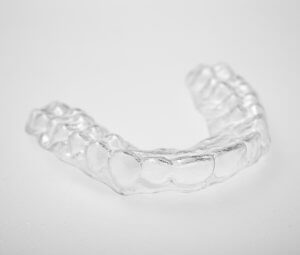
If you want a clear retainer that is removable then an Essix type retainer could be suitable. This is formed to completely cover your teeth and sit above your gum line.
Some people prefer this type because they are less noticeable than wire retainers.
You’ll need to remove your device for eating and clean it regularly. It might become discoloured over time, but you can prevent this with a proper cleaning routine. These retainers should also be replaced every 6 months.
Unlike Hawley retainers, Essix retainers can be ordered online, without the need to visit a dentist. Our top choice for Essix retainers in the UK is NewSmile. They offer online bespoke Essix retainers at a price as low as 50% less than what you would get from the dentist — while using the same FDA materials and ISO 13485:2016 manufacturing standards.
The process is super easy – you first order your impression kit, then you make your impressions at home, send them in and NewSmile will make your retainers and send them directly to your doorstep.
Vivera retainer (Invisalign)
This is the clear, plastic retainer from the manufacturers of Invisalign braces (sometimes called an Invisalign retainer). It is made from a strong material for greater durability.
To get one fitted, a laser scan is taken of your mouth, so if you don’t like the feeling of teeth impressions being taken this could be a great option. You don’t have to have had Invisalign braces to be able to get a Vivera retainer.
Fixed Retainer
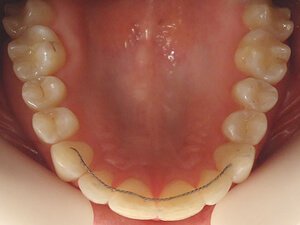
in alignment
A completely different option is a fixed bonded retainer. Also called a lingual or permanent retainer, this type is only used on the front six teeth, often just on the lower jaw. A strong wire is glued behind the teeth, permanently retaining the shape you achieved with braces. It might need to be replaced every 3-10 years.
Fixed retainers are a little more expensive than basic removable ones, but the fact that they are completely hidden is a plus for many people.
While there’s no chance of losing this type of device, having the wire attached to your teeth does make it difficult to clean and floss your teeth properly. Read more about the pros and cons of permanent retainers.
How much do retainers cost in the UK?
Teeth retainer costs in the UK range from £60 – £400 per arch with a private dentist. This price depends on which dentist you go to and which type you choose.
Type of retainer | Material | Permanent or removable? | Price range | Lasts for: |
Fixed (bonded) | Wire fixed behind teeth | Permanent | £100 - £400 (single) | 3 - 10 years |
Hawley (metal) | Wire and plastic | Removable | £70 - £150 (single) | 5 - 10 years |
Essix (clear) | Clear plastic | Removable | £60 - £145 (single) | 6 months - 3 years |
Vivera (Invisalign) | Clear plastic | Removable | £125 - £200 per set | 1 - 5 years |
Note that prices are for a single device, except for Vivera Invisalign retainers which come in a pair. You often have to buy several sets of Vivera retainers at once, making the price around £400 – £700.
Follow-up treatment or checks may be needed after you have your appliance fitted, so make sure you check whether this is included in the price. There are other factors to consider as well; the cost of a removable retainer may be lower than the cost of a permanent one, but how often will you have to replace them?
When buying a retainer it’s good to check how long the provider will keep your teeth impressions on file. If your retainer gets lost or broken, you’ll want to get your hands on a replacement quickly. Getting a new retainer is easier if you don’t have to have new impressions made, and it may cost slightly less.
NewSmile cuts costs by up to 50% by providing bespoke retainers online. Plus, they keep your impressions on record so that when you need to replace your retainer in the future, you can do so with the click of a button!
Can you buy retainers online in the UK?
Yes, you can buy a replacement retainer online if you can’t get to a dentist or want to save money on in-office retainer prices. First, you’re sent an impression kit which you use to make a mould of your teeth at home. Send this off, and soon you’ll receive your clear retainers in the post.
This online retainer service is only available for clear Essix retainers. If you want a Hawley or fixed appliance, you’ll still need to visit a dentist.
If this service is interesting to you, check out NewSmile Retainers. Save up to 50% when compared to retainers you get direct from the dentist, while getting the same quality of craftmanship and material. That’s because NewSmile works with high-quality FDA-approved materials, and uses impressions of your teeth to make bespoke retainers. Choose from their standard retainers to extra thick retainers if you tend to clench your jaw or grind your teeth.
Can you get retainers on the NHS?
Under 18’s are entitled to free dental treatment on the NHS, and this applies to orthodontic treatment for children and retaining devices, as long as the work is deemed medically necessary.
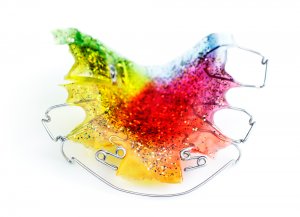
options like this
Generally speaking, the NHS will not cover treatment for:
- Slightly protruding teeth
- Minor misalignments that don’t affect function
- Over- or under-bites where you can still use teeth normally
- Anything that won’t cause future health problems
This guide from the British Orthodontic Society explains more about what’s covered by the NHS.
Note that you won’t get to choose which type of appliance you get on the NHS; your dentist will decide which one is best for your needs. You probably won’t get any fun customisation options, either.
Most adults are not eligible for braces and retainers on the NHS, except where there is a clear medical need for the treatment. In this case, a consultation or an appliance adjustment falls under the Band 1 charge of £23.80, while treatment with braces (including the first set of retainers) falls into Band 3, costing £282.80.
What does an NHS replacement retainer cost?
Even if you or your child get free braces on the NHS, you won’t get free retainer replacements. The cost to replace an NHS retainer that’s lost or broken beyond repair is £84.80 per device, so £169.60 for a complete set.
What does a replacement retainer cost?
As mentioned above, the NHS charge for replacement retainers is £84.80 per device.
With a private dentist, often a new retainer costs the same as the original. There might be some saving if you don’t need new dental impressions. Another option that often works out cheaper than visiting a dentist is to buy replacement retainers online. It’s best to organise this before your current set breaks or needs to be replaced, so that your teeth don’t have too long to move between sets.
Damaged retainers can sometimes be mended. If yours has been damaged or broken, seek advice from your dentist.
How long do you have to wear a retainer after braces?
To make sure your teeth stay straight, you should be prepared to wear a retaining device for the rest of your life. Otherwise, your teeth will slowly move out of alignment again. It’s quite common for people to notice their teeth have moved after braces, years after receiving orthodontic treatment.
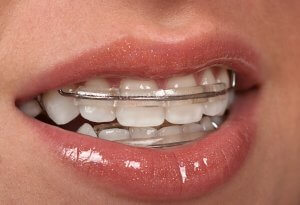
If you have a removable retainer, you’ll probably be asked to wear it nearly all the time for the first six months, except while eating of course! After that, you can normally start to wear your device only overnight. Your dentist will instruct you on how long to wear your teeth retainer each day according to your treatment.
By its very nature, a permanent retainer stays in place the whole time. You don’t have to remember anything except your normal cleaning routine – a plus if you are worried you might forget to put your device in each day or night.
How to keep your retainer clean
Cleaning your retainer is just as important as cleaning your teeth. Otherwise, food debris can get stuck and encourage plaque and bacteria to build up, increasing the risk of tooth decay and gum disease and creating bad odours. Clear retainers will also become discoloured if you don’t clean them properly.
Removable and permanent retainers need different types of care. Your dentist will show you what to do, and we also have a full page on how to clean retainers with more detail and some natural products to use. For now, here’s a quick overview:
Removable retainers
You can follow these simple steps for the best way to clean plastic retainers as well as metal ones:
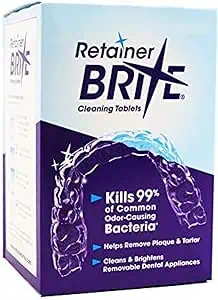
- Rinse your device with warm water after removal and before putting it back in.
- Clean it twice a day with dish soap, or castile soap, using a soft bristle toothbrush to brush away plaque and bits of food.
- Use a cotton bud to get into any deep grooves.
- Some dentists will recommend you soak your device in a retainer cleaning product like Retainer Brite. Follow your dentist’s advice and the instructions on the product packaging.
- To clean clear retainers that have turned yellow, gently scrub using baking soda, water and a soft toothbrush.
- Never use whitening toothpaste on your Hawley or Essix retainer! It can be too rough and abrasive, so stick to soap and water.
The video below shows how this looks in practice for Shabrina, who wears clear retainers. She explains what she does for a daily clean morning and night, as well as for a deep clean several times a week. She says the deep clean is important for getting rid of any smells that inevitably build up:
How to clean fixed retainers
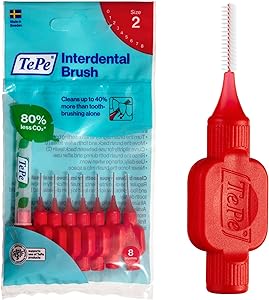
Bonded retainers can’t be removed for cleaning, so the process is different. It might take a little getting used to but it will be part of your daily routine in no time.
Dental floss or interdental brushes are vital to maintaining your dental health when you have fixed retainers behind your teeth. If you use floss you will need to use a threader to pass it between your teeth, under the bonded wire. Interdental brushes may make it easier to get to any plaque build-up; have a try and see what works best for you. Of course, you should still brush your teeth as normal too.
Conclusion
There are several types of teeth retainers you can wear after braces, but they all have the same aim: to keep your teeth in position after they have been straightened.
Whether you decide to get a fixed retainer or a removable Hawley or Essix retainer, the important thing is you follow your dentist’s instructions for using it properly. They will tell you how long to wear your retainer each day and how to clean it properly so it lasts as long as possible.
If you’re looking for an affordable way to get a new retainer made, consider ordering one online with Newsmile. Your clear retainer will be custom-made from impressions you take at home; much more convenient than multiple trips to the dentist!
Teeth Retainer FAQs
Do retainers hurt?
Retaining devices can hurt sometimes, but usually just for a day or two after fitting. The pain should not be really bad and you can take your usual painkillers to manage this type of pain. If it continues or gets worse you should go to the dentist as soon as possible.
If you forget to wear your retainer for a few days, you can expect it to hurt when you put it back in. This is because your teeth have already started to move slightly and you’re forcing them back into place.
If parts of the retainer are irritating your tongue, cheeks or gums, mention it to your dentist. Often, this is easily solved by using a nail file to remove any sharp edges.
Can I keep my teeth straight without a retainer?
The short answer is, no. To guarantee your teeth will stay in position after braces, you need to keep wearing your retainer as directed by your dentist or orthodontist. It’s completely normal for your teeth to move over time and this movement can be unpredictable.
What’s the best retainer after braces?
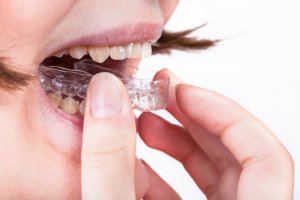
something less obvious
It is important to wear a plastic or wire retainer after braces, but which retainer is best for you depends on several factors like cost, durability and appearance. You might also consider how easy or difficult it is to clean.
You may be offered a choice of metal vs clear retainers, and there are positive and negative points about each. Weigh up your options, but remember that a removable retainer can easily be changed if you don’t like it. Ask your dentist what they recommend for you, and why.
Why do my retainers smell bad?
Your retainer device is exposed to all the food, plaque, and bacteria in your mouth so – just like your mouth – it will start to smell if you don’t clean it properly. Soak it in a specially designed cleaning product like Retainer Brite every couple of days to keep smells and stains at bay.
Can I get a night retainer?
Your dentist will tell you when to wear your retainer for the best results. You may have to wear it all day at first, but most people can transition to nighttime only after a few months. If you’re conscious of how you’ll look wearing a retainer in the daytime, opt for a fixed one behind your teeth or a clear one.
Where can I buy a teeth retainer near me?
Plenty of dentists and orthodontists offer at least one type of retainer, but if you want a specific kind then you may have to check with a few dental clinics in your area. There is also the option to buy one online, which may be more convenient for you.
Healthline: How to Clean Each Type of Retainer. Consulted 28th March 2019.
British Orthodontic Society: Orthodontics & The NHS. Consulted 28th March 2019.




